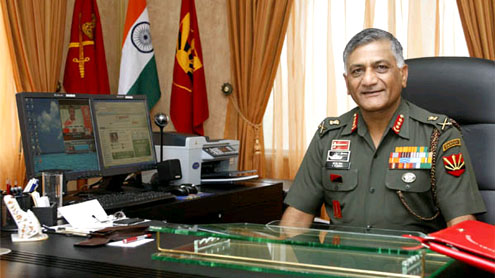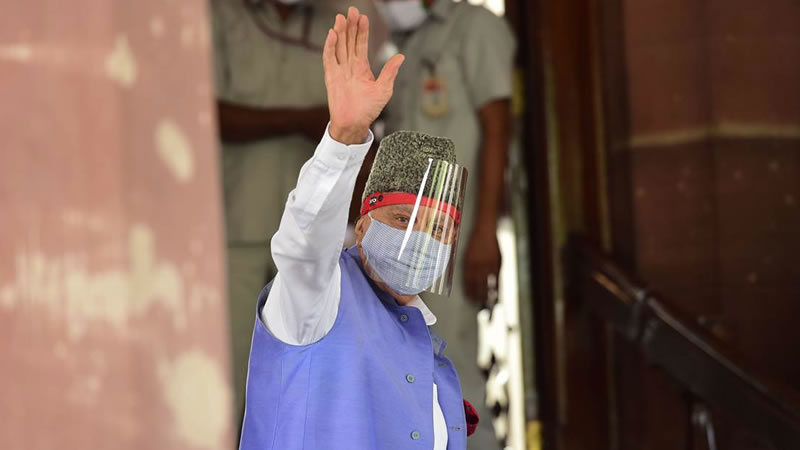 NEW DELHI: India has rejected Pakistan’s continuing veiled threats of using tactical nuclear missiles in the battlefield to deter Indian forces, holding that no one should be foolish enough to think of nuclear weapons as war-waging weapons.
NEW DELHI: India has rejected Pakistan’s continuing veiled threats of using tactical nuclear missiles in the battlefield to deter Indian forces, holding that no one should be foolish enough to think of nuclear weapons as war-waging weapons.
“Let’s be quite clear on it… Nuclear weapons are not for war-fighting. They have got a strategic significance and that is where it should end,” said Army chief General V K Singh, speaking on the sidelines of the 64th Army Day on Sunday.Asked about reports that both Pakistan and China were fast bolstering their nuclear arsenals, Gen Singh said, “I and my Army are not bothered about who has nuclear weapons. We have our task cut out and we will progress along that.”
The “task” is to “transform” the 1.13-million strong force into “an agile, lethal and networked force”, which can rapidly mobilize and then launch and sustain multiple armoured thrusts across the border, even as India maintains a credible minimum nuclear deterrent.The largely futile Operation Parakram, the massive forward troop mobilization along the western front after the Parliament attack in December 2001, taught the Army harsh lessons since it took almost a month for it to amass strike formations at the borders. By then, the US had prevailed on the then NDA regime to back down, and Pakistan had shored up its defences.
“A lot has changed since the days of Op Parakram. If we did something in 15 days then, we can do it in seven days now. After two years, we may be able to do it in three days,” Gen Singh said.In other words, the Army’s three “strike” corps — 1 Corps (Mathura), 2 Corps (Ambala) and 21 Corps (Bhopal), each with their three to four self-contained, highly-mobile “battle groups” centered around T-90S and T-72 M1 tanks – can now be ready at their border launch points within a week of the government directive.
The Army is now working towards further cutting down this mobilization timeframe to 72 to 96 hours, even as its 10 “pivot corps” undergo “structural changes”, operational logistics are reorganized and “theatrisation of combat support” tested.Gen Singh did admit the Army was fine-tuning its “Pro-Active Strategy”, sometimes dubbed the “Cold Start” doctrine, to achieve desired politico-military results. The unstated aim is to punish Pakistan in a limited manner, not invade or occupy its territory, in the event of a terror strike.
The strategy to launch multiple blitzkrieg thrusts across the border, tested in two major exercises Vijayee Bhava and Sudarshan Shakti last year, has certainly got Pakistan worried.Having already boosted its nuclear arsenal to around 90-110 warheads, compared to India’s 80-100, Pakistan has also taken to projecting its 60-km Nasr (Hatf-IX) nuclear missile as a fitting riposte to thwart any such Indian move.
But while India has a declared commitment of “no first-use”, its nuclear doctrine does hold that “nuclear retaliation to a first strike will be massive and designed to inflict unacceptable damage”. India even retains the option to retaliate with nuclear weapons if its forces “anywhere” are attacked with biological or chemical weapons. – TOP












